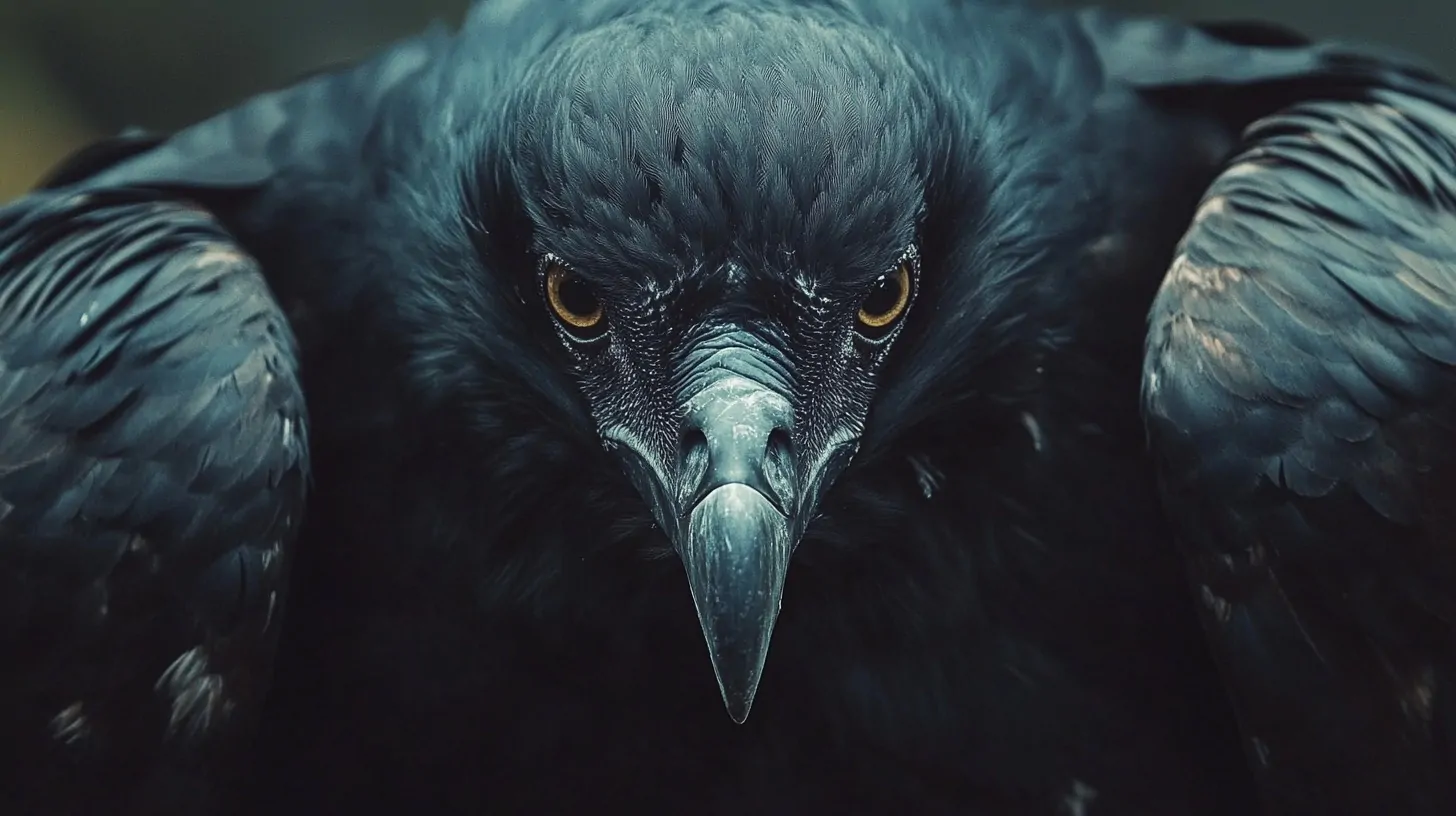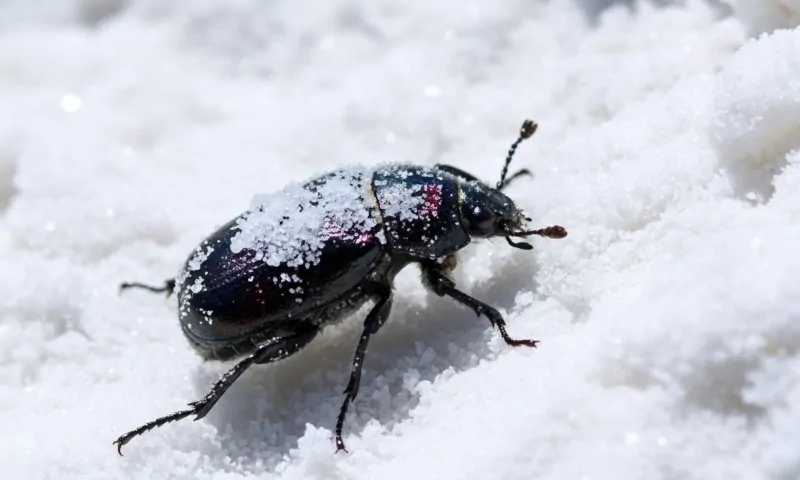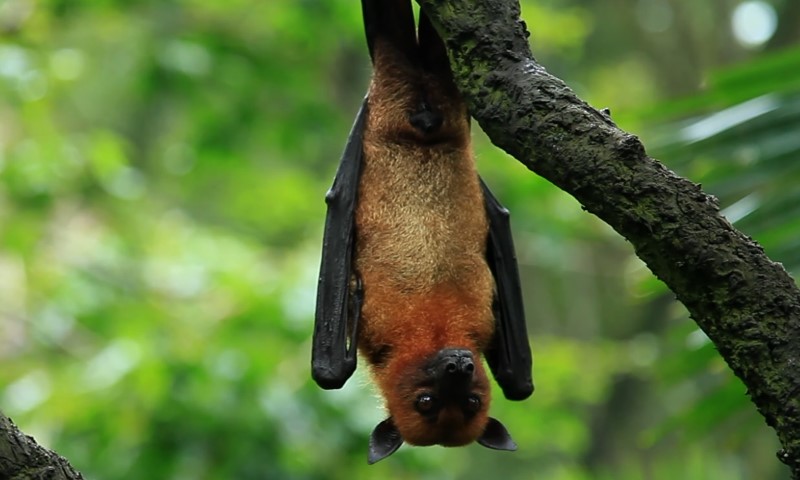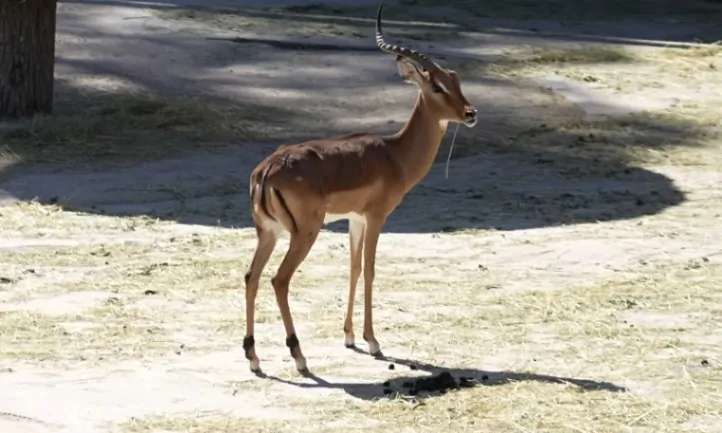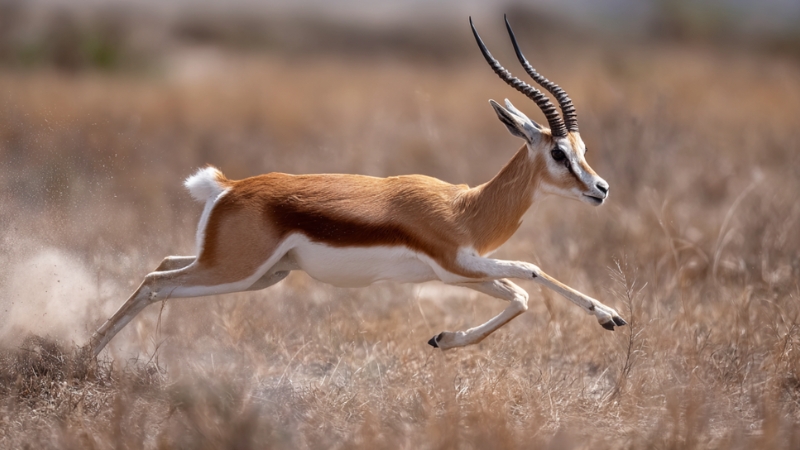Black birds always draw attention with their sleek look. What really makes them stand out are their sharp survival traits.
Their beaks play a big part in that. Long beaks help with feeding, digging, or reaching into tight spots. Every shape matches a need.
Some black birds have impressively long beaks built for very specific tasks. Each one fits its surroundings and diet.
Here are a few that show exactly how nature gets it right.
1. African Openbill
The African Openbill does not rely on looks alone. Its beak does all the work. The visible gap in the bill is not a defect. It gives the bird a strong grip on slick, spiral-shaped shells.
The bird prefers swampy terrain. Shallow waters in sub-Saharan Africa hold exactly what it needs. Apple snails fill its plate. Mollusks come next. Its beak works like fine-tuned tongs. Nothing fancy. Just precise.
No need to dive. It wades, picks, and pulls. Simple and efficient.
Quick Facts
Body Build
Slender
Plumage
Black
Beak Type
Gapped
Beak Length
135–196 mm (5.3–7.7 inches)
Habitat
Wetlands across sub-Saharan Africa
Diet
Apple snails and aquatic mollusks
Molting Behavior Catches Few Eyes
Most birds keep a strict schedule for feather replacement. The African Openbill does not. Its molting period shifts based on food supply and wetland conditions.
It molts slowly and out of sync with others. This odd pace helps it stay ready to feed year-round. No downtime. No gaps in performance. Always on the hunt. Always dressed in black.
2. American Crow
The American Crow does not need to try hard. It already runs the show. That straight beak does everything. Pick apart a carcass? Done. Steal a snack? Easy. Pop open seeds? No problem.
It fits anywhere. City sidewalks. Thick woods. Open farms. Trash cans. Crop rows. Power lines. It does not care. It adapts fast and eats almost anything it finds.
You do not see panic in a crow. You see confidence.
Quick Facts
Size
Large
Plumage
Glossy black
Beak Type
Straight
Beak Length
6.37 cm (2.5 inches)
Habitat
Cities, forests, farmlands
Diet
Seeds, insects, small animals, carrion
They Do Funerals. Seriously.
If a crow dies, others gather. They do not just fly off. They stop. Watch. Stay quiet. No feeding. No calls. Just stillness.
Nobody fully knows why. Some think they study the scene to figure out danger. Others say it looks like a moment of respect. Either way, it is not random.
Crow brains work in ways that surprise people who think only humans care. They notice. They react. They remember.
The American Crow (Corvus brachyrhynchos) stands out with its glossy, jet-black plumage and sleek, straight beak, a true multitool in the bird world.
3. Black Eagle

The Black Eagle does not rush. It glides low, slow, and smooth over treetops. It does not need speed. It needs the right angle. One dive is all it takes.
That beak tells you everything. Long. Hooked. Built for tearing through fur, feathers, and flesh. Nothing cute about it. No second chances for the prey.
It lives in thick forests across Asia. Spots prey under the canopy. Picks them off in silence. No sound. No warning.
Quick Facts
Size
Large
Wings
Broad
Beak Type
Long and curved
Beak Length
Varies, but always sharp and strong
Habitat
Subtropical and tropical forests in Asia
Diet
Small mammals, birds, reptiles
Nesting Habits Are Strange but Smart
Black Eagles build nests with green leaves still attached to branches. Not dry ones. Fresh ones. That choice is not random.
Fresh leaves may help repel bugs or keep the nest cooler. Some think it throws off predators by masking scent or blending in better. Whatever the reason, it works.
4. Black Oystercatcher
The Black Oystercatcher never blends in. That bright red-orange beak stands out even against crashing waves and black rocks. It is not there for decoration. That thing pries, stabs, twists, and cracks.
It lives where waves slam rocks all day. Perfect spot for mussels and limpets. Even better for a bird that can split shells wide open without flinching.
It does not chase fish or dig for worms. It sticks to what it knows. Sharp beak. Hard shell. Fresh catch.
Quick Facts
Type
Coastal bird
Beak
Bright red-orange, strong and long
Beak Length
About 10 cm (4 inches)
Habitat
Rocky coastlines across North America
Diet
Mussels, limpets, marine invertebrates
Their Calls Are as Loud as the Shore Itself
Waves are loud. So they get louder.
Black Oystercatchers call out in sharp, piercing bursts that cut through wind and surf. You will hear them before you see them. It is not just noise. They use those calls to claim space, find mates, and keep other birds away.
Pairs even call together in synced patterns, side by side.
5. Great Cormorant
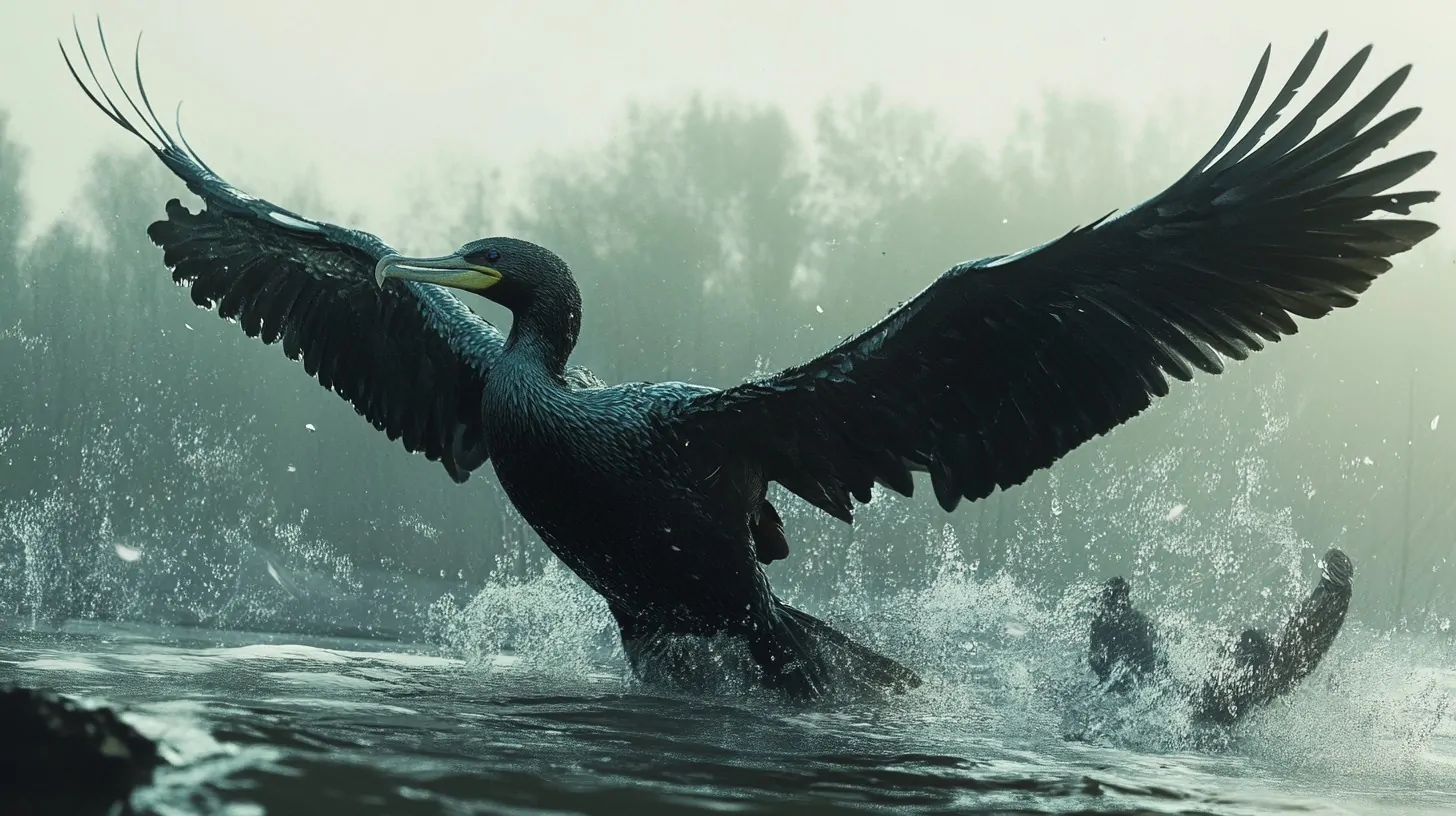
The Great Cormorant is a pro in the water. It does not paddle. It powers through. Wings turn into underwater engines. That hooked beak? Built for grip. Fish slip past most birds. Not this one.
It dives deep and fast. No splashing around. No flapping chaos. It slides in smooth, snags a fish, and surfaces like it owns the place.
You will find it along coasts almost anywhere. Saltwater or freshwater, it does not care. If there are fish, it is there.
Quick Facts
Size
Large water bird
Beak Type
Hooked
Beak Length
About 7 cm (2.7 inches)
Habitat
Coastal waters worldwide
Diet
Fish caught through deep diving
Their Feathers Stay Wet on Purpose
Most water birds repel water. Not cormorants. Their feathers soak it up. Sounds wrong, but it works.
Wet feathers reduce buoyancy. That lets them dive deeper and stay under longer. Afterward, they have to dry out. That is why you always see them perched with wings stretched wide.
Not showing off. Just drying out.
6. Common Raven
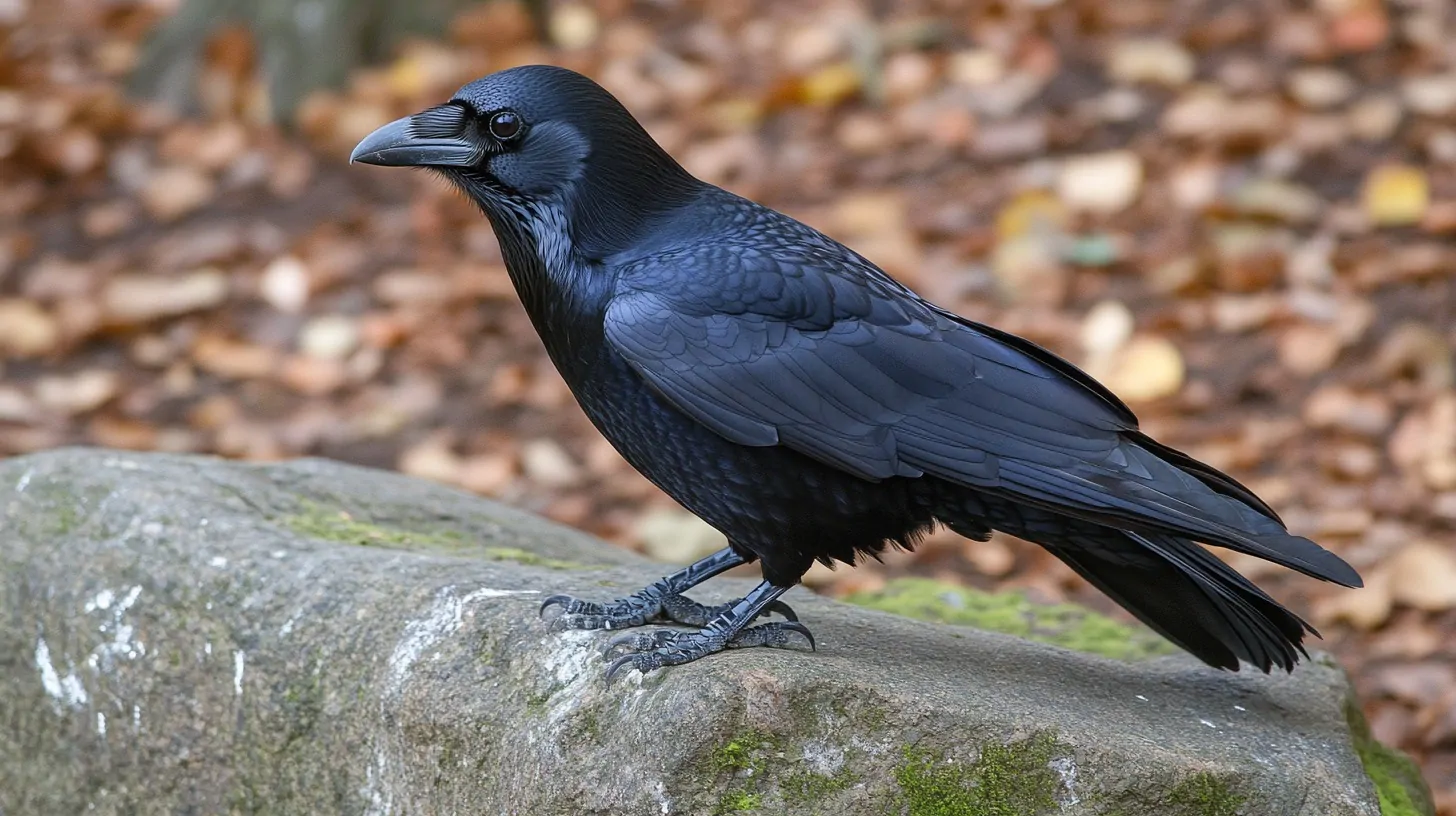
The Common Raven is not just big. It is sharp. That curved beak does more than eat. It breaks, tears, pokes, digs, even shapes tools. It knows how to use it.
Ravens do not follow a pattern. They change up tactics. One day they scavenge. Next day they hunt. Next day they steal. No shame in that. Whatever works.
They live almost anywhere. Deserts. Mountains. City rooftops. If they find a gap, they take it.
Quick Facts
Size
Large
Beak Type
Curved
Beak Length
Around 6 cm (2.4 inches)
Habitat
Across the Northern Hemisphere
Diet
Carrion, insects, small animals
They Remember Faces and Hold Grudges
Ravens can pick a face out of a crowd. If someone messes with them, they do not forget. They even warn others.
They can remember people for years. That memory works both ways. Treat them well, and they recognize you. Treat them badly, and they stay out of reach or call in backup.
7. Rhinoceros Hornbill
The Rhinoceros Hornbill turns heads instantly. That beak looks unreal. Long, curved, and topped with a giant casque. It is not for show. It helps project sound and may even help spot mates in thick jungle layers.
It lives high up in Southeast Asia’s rainforests. The beak reaches deep into the canopy, grabbing fruit and catching small animals.
It does not waste time hopping around. It picks a tree and works it over with skill. No competition comes close.
Quick Facts
Feature
Large casque and curved beak
Beak Length
10–12 inches
Habitat
Rainforests in Southeast Asia
Diet
Fruits, insects, small vertebrates
Nesting Strategy Locks In the Female
During nesting, the female seals herself inside a tree cavity using mud, fruit pulp, and droppings. The male passes food through a slit. She stays inside until chicks grow strong.
8. Toco Toucan

The Toco Toucan does not blend in. That huge, colorful beak is impossible to miss. It looks heavy. It is not. Air pockets inside make it light but strong. Smart design.
That beak works like a toolbelt. Pulls fruit. Steals eggs. Grabs lizards. Reaches what others cannot. It lives up in South American rainforest trees, where reach matters.
It also acts like a radiator. Heat flows out through the beak to keep the bird cool. No sweat. Just smart heat control.
Quick Facts
Plumage
Black with white throat
Beak
Large, colorful, lightweight
Beak Length
7.5–8 inches
Habitat
South American rainforests
Diet
Fruits, eggs, small reptiles
They Sleep With Beaks Tucked Tight
At night, toucans fold up tight. Beak tucked under feathers. Tail flipped over the back. Compact as possible.
It helps them conserve warmth and avoid detection.
9. Common Grackle
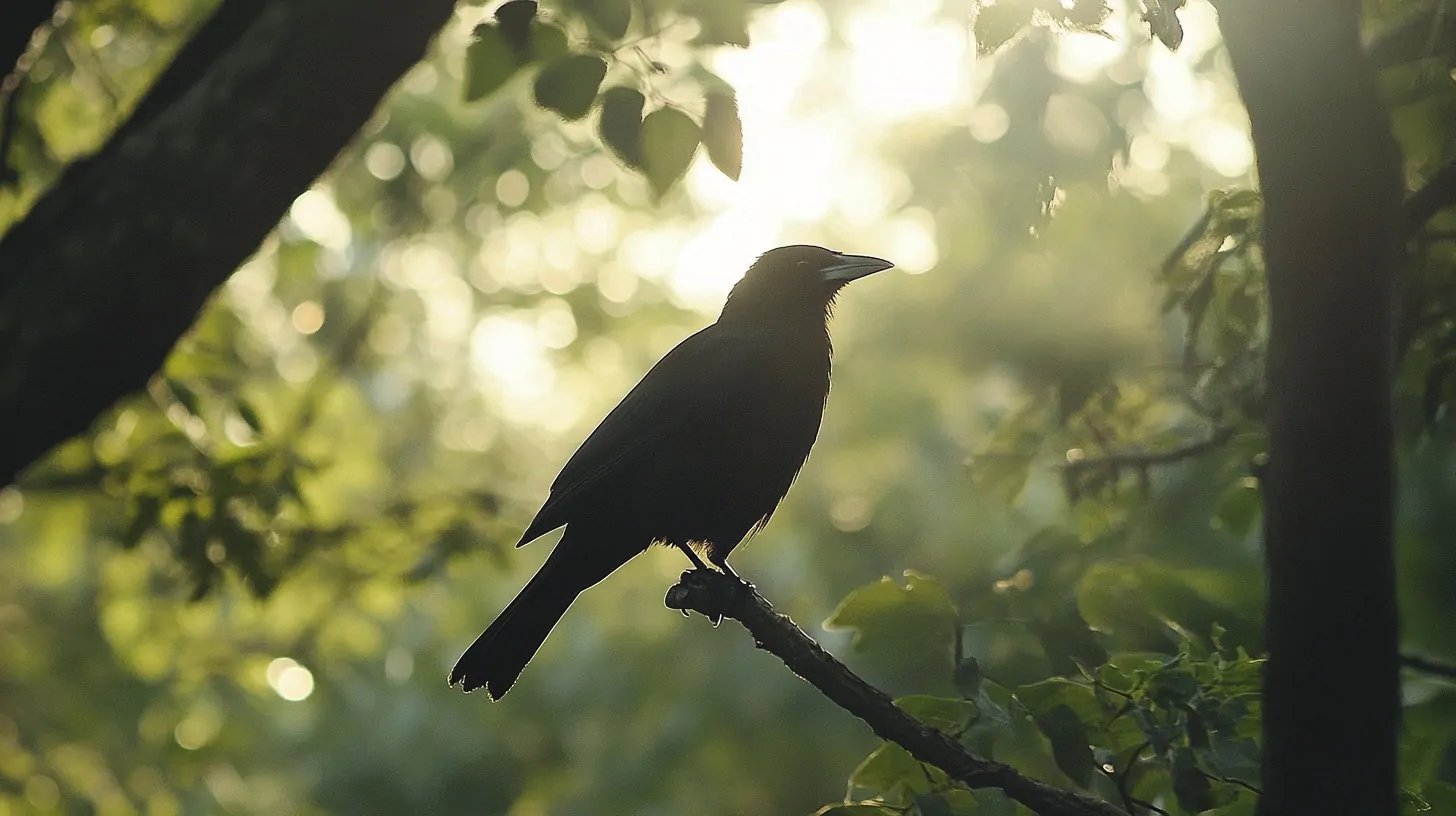
The Common Grackle does not care where it lands. Cities, farms, forests—it claims it all. That narrow, curved beak picks insects off crops, tears open trash bags, or jabs seeds out of hard soil.
It shimmers with purple and green in sunlight. Loud too. Sounds bounce out in all directions. Some calls mimic other birds. Some just confuse predators.
It eats what it finds. Not picky. Just effective.
Quick Facts
Plumage
Iridescent black
Beak Type
Slightly curved
Beak Length
4–5 cm (1.5–2 inches)
Habitat
Urban zones, fields, forests in North America
Diet
Insects, seeds, small animals, garbage
They Bully Other Birds—And Get Away With It
Grackles raid nests, steal food, and chase smaller birds off feeders.
10. European Starling
The European Starling does not ask for space—it takes it. Backyards, farms, parks, parking lots. No area is off-limits. It shows up in groups, moves in fast, and makes noise doing it.
That thin, straight beak digs deep. Soil. Cracks. Grass. Perfect for hunting beetles, ants, or worms. Fruit and seeds fill the gaps. Anything works.
It adapts fast and spreads even faster. Europe. North America. It covers ground like no other.
Quick Facts
Plumage
Glossy and iridescent
Beak Type
Slender
Beak Length
2.5–3 cm (1–1.2 inches)
Habitat
Urban and rural areas near humans
Diet
Insects, fruit, seeds
Murmurations Make the Sky Move
They flock in the thousands. One quick twist and the whole group shifts mid-air. Those massive formations are called murmurations.
It is not random. They react to neighbors, not leaders. Each bird follows the movement of the closest few, and somehow the whole shape flows together.
11. Boat-tailed Grackle
The Boat-tailed Grackle struts across marshes like it owns them. Long legs. Sharp beak. Loud voice. It does not blend into the reeds. It rules them.
It wades through Gulf and Atlantic coast wetlands, picking crustaceans and fish out of shallow pools. It pokes through grass like a pro.
The beak cuts through wet vegetation and pulls up prey with ease. No hesitation. No struggle.
Quick Facts
Legs
Long
Beak Type
Pointed
Beak Length
4–5 cm (1.5–2 inches)
Habitat
Marshes on Gulf and Atlantic coasts
Diet
Crustaceans, small fish, insects
Males Look Bigger Than They Are
When males fluff up their feathers and fan their tails, they look huge. That extra size is all show. They do it to grab attention and intimidate other males.
12. Black Vulture
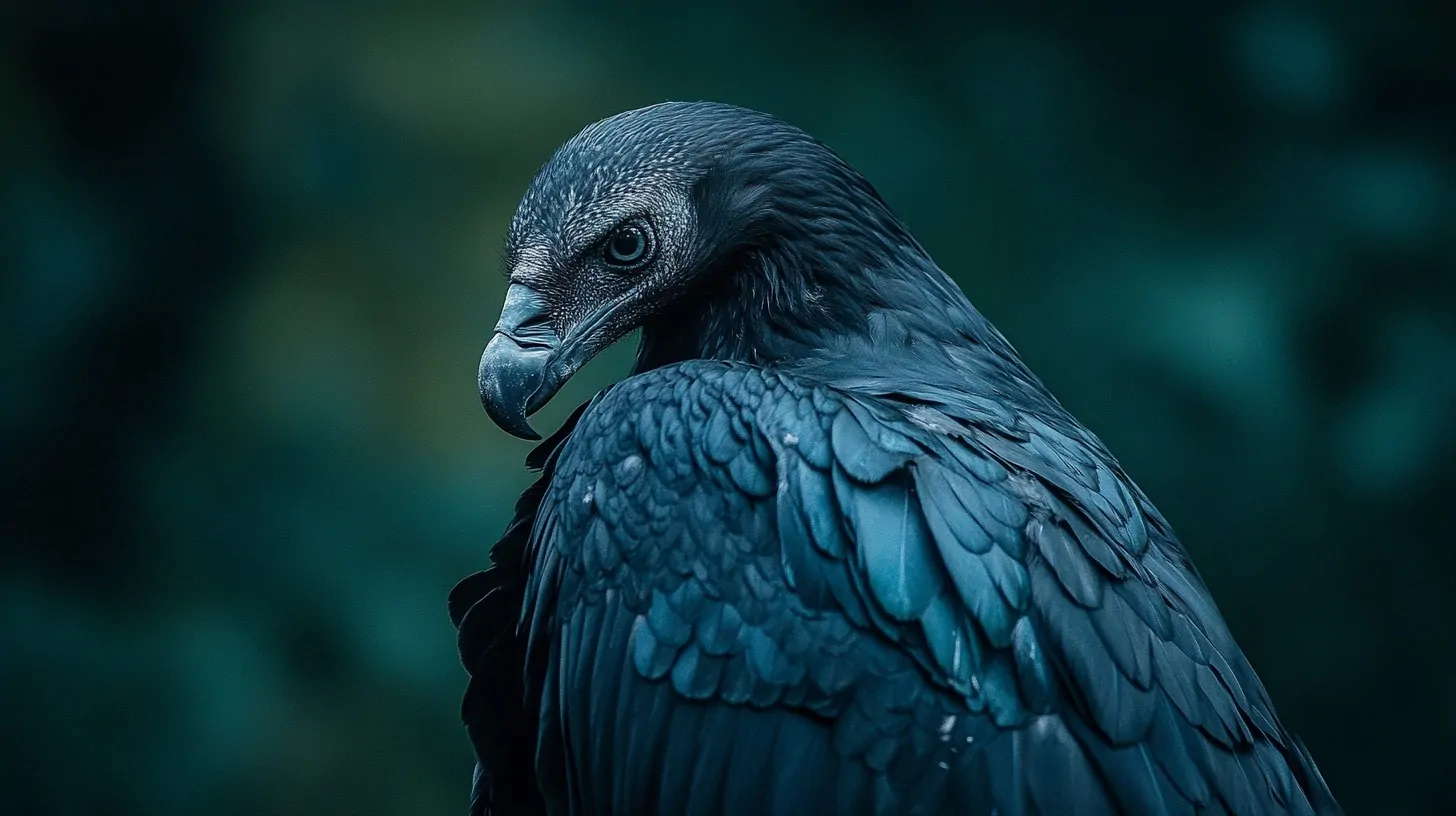
The Black Vulture knows exactly what to look for—already-dead meals. It does not hunt. It finds. That hooked beak slices into thick hides. No waste. No delay.
It flies in tight circles with sharp eyes locked on the ground. But here is the trick—it watches other vultures too. If a turkey vulture finds something first, the black vulture follows.
Smarter than it looks. Hungrier than it seems.
Quick Facts
Type
Large scavenger
Beak Type
Hooked
Beak Length
About 5 cm (2 inches)
Habitat
Forests, fields, cities
Diet
Carrion, small mammals, fish
They Travel in Groups for a Reason
Black Vultures stay in tight flocks. They fly together, roost together, feed together. It is more than social time.
13. Black Stork

The Black Stork does not show up often. It avoids crowds. Prefers quiet rivers and hidden wetlands. When it flies overhead, that red beak and legs catch light like fire.
It moves slowly along the water’s edge, eyes fixed on fish, frogs, and anything that moves. One quick stab. One clean catch.
No rush. No noise. All precision.
Quick Facts
Build
Tall
Plumage
Glossy black
Beak Type
Long, red, straight
Beak Length
7–8 inches
Habitat
Wetlands in Europe, Asia, Africa
Diet
Fish, amphibians, small mammals
They Avoid People and Stay Invisible
Unlike white storks, black storks stay far from towns. They nest deep in forests or cliffs where no one goes.
14. Bobolink
The Bobolink looks soft and quiet, but its story runs long. It crosses continents to survive. North to South America and back again. Thousands of miles. Every year.
Its short, sharp beak is built for seeds. Grasslands give it plenty. Insects fill in when needed. Light frame. Strong wings. No extra weight.
When breeding season hits, the male changes color fast. Black base with white streaks across the back. Almost looks upside down.
Quick Facts
Type
Migratory
Beak Type
Sharp
Beak Length
About 1.5 cm (0.6 inches)
Habitat
Grasslands in North America
Diet
Seeds, grains, insects
Their Migration Is One of the Longest
Bobolinks fly around 12,000 miles each year round-trip. They cross oceans, forests, mountains, and farms.
The Bottom Line
Black birds sporting long beaks exemplify the remarkable diversity found in the avian world.
Whether it’s the African Openbill expertly extracting mollusks or the Toco Toucan deftly plucking fruits, these species demonstrate just how crucial beak adaptations are for survival.
But their significance goes beyond their striking appearance; they play vital roles in their ecosystems, reminding bird enthusiasts and researchers to admire, and actively preserve, their natural habitats.
Related Posts:
- How Long Can a Lion Endure Without a Meal? Survival…
- Kangaroo Leaps - Discovering Their Impressive…
- Do Animals Get Sunburned? How Desert Species Protect…
- Raptor Birds: How They Hunt, Live, and Survive
- Hawk vs. Falcon - 10 Key Differences Between These…
- Vulture vs. Condor - What Sets These Giant Birds Apart?

